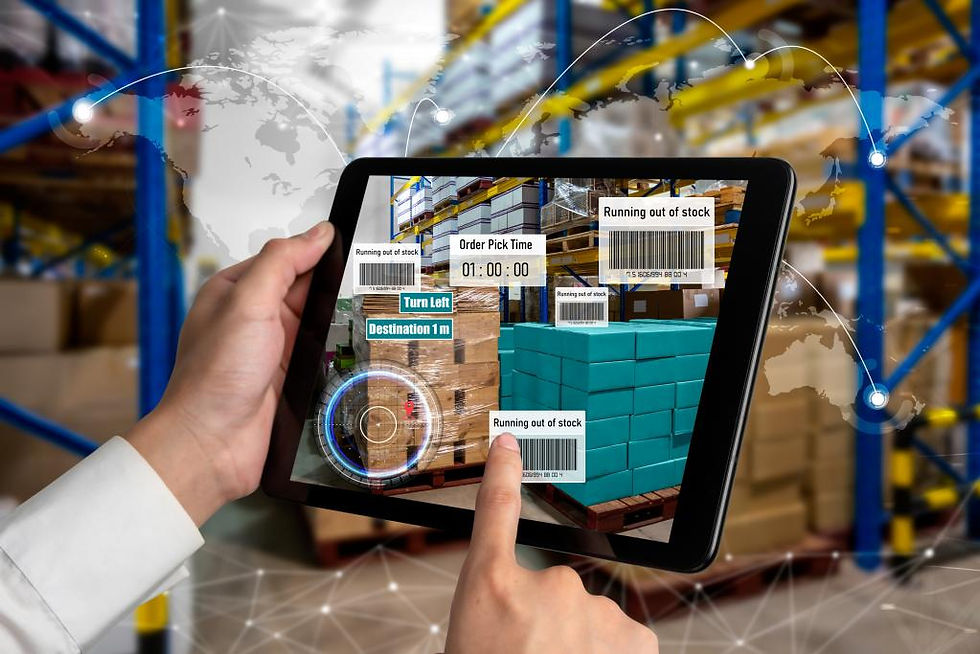US Tariff Impact in 2025: How Smart Companies Are Adapting Supply Chain Strategy
- Cinnex Resources

- May 27
- 5 min read

The US tariff impact in 2025 is reverberating across global markets, and no industry feels it more than those dependent on international supply chains. With former President Trump’s re-election and the swift implementation of new tariff policies, a familiar pattern of disruption is unfolding—one that has already begun reshaping sourcing strategies, pricing structures, and inventory planning around the world.
In early 2025, the administration announced sweeping tariff increases on goods imported from China, Vietnam, and Mexico, with targeted levies ranging from 15% to 35%. Electronics, semiconductors, automotive parts, and industrial components have been especially affected. The stated goal: to revive American manufacturing and reduce dependency on foreign suppliers. However, the US tariff impact has proven more complicated in execution. As supply chain leaders scramble to respond, the cost of doing business globally is rising sharply—triggering a wave of restructuring in how companies manage procurement and distribution.
Multinational corporations have issued urgent memos to regional teams, outlining cost containment strategies and reassessing supplier contracts. Meanwhile, SMEs and mid-sized businesses find themselves in a more precarious position. Without the scale or financial buffers of large enterprises, the US tariff impact hits them harder. Margins are squeezed, deliveries are delayed, and customer satisfaction begins to decline.
One of the most immediate effects of the US tariff impact has been a spike in landed costs. Businesses that previously sourced raw materials or finished goods from China are now facing tariffs that make those imports economically unfeasible. As a result, many are shifting sourcing strategies toward Southeast Asia or Latin America. However, this shift brings its own challenges: new suppliers must be vetted, logistics routes renegotiated, and new compliance risks managed. What was once a streamlined supply chain becomes a complex web of rapidly changing variables.
Shipping delays are also becoming more common as companies struggle to reroute inventory and find alternative distribution channels. Ports in non-tariffed countries are seeing increased congestion, leading to longer lead times and higher freight costs. These logistics challenges compound the US tariff impact, creating a double strain on supply chain efficiency and financial predictability.
Beyond costs and delays, the US tariff impact has triggered a fundamental rethink of global supply chain strategy. Companies are realizing that traditional models—based on low-cost sourcing, centralized production, and manual planning—are too rigid to withstand today’s policy shocks. In response, supply chain leaders are accelerating digital transformation initiatives designed to increase agility, improve visibility, and enable smarter decision-making under pressure.
This transformation is most visible in how companies are upgrading their procurement and inventory systems. The need for real-time supplier performance tracking, predictive cost modeling, and automated sourcing workflows has never been more urgent. Businesses are no longer just looking for software; they’re searching for intelligent platforms that help them respond quickly and confidently to external shocks like tariffs.
Enter Cinnex: a modern ERP platform purpose-built to help companies respond to the US tariff impact and beyond. Unlike legacy ERP systems that require months of customization and offer limited flexibility, Cinnex is an AI-first solution that empowers operations teams to pivot fast. With a deployment timeline of just two months, Cinnex equips companies with the tools they need to adapt sourcing strategies, monitor inventory in real time, and maintain profitability in volatile trade environments.
One of the most powerful features of Cinnex in the context of the US tariff impact is its AI-powered procurement module. The system analyzes supplier data across regions and recommends alternatives based on cost, delivery time, and tariff exposure. If a primary supplier in China is no longer viable due to a 25% tariff, Cinnex can instantly suggest suppliers in Vietnam or India who meet quality and cost requirements. These insights allow businesses to act proactively rather than reactively.
Another critical capability is inventory optimization. With unpredictable shipping delays and cost increases, inventory management becomes both a science and an art. Cinnex uses historical data and demand forecasts to recommend optimal stock levels, reorder points, and storage strategies—ensuring businesses aren’t caught flat-footed during supply disruptions. In the face of the US tariff impact, smarter inventory practices can make the difference between absorbing extra costs or passing them on to customers.
Cinnex also provides predictive cost modeling tools that simulate various sourcing and tariff scenarios. Operations teams can assess the financial implications of sourcing from different countries, switching suppliers, or altering order volumes. These simulations are essential for strategic planning, especially as the US tariff impact continues to evolve based on shifting political and economic conditions.
Beyond technology, Cinnex redefines how businesses interact with their supply chains. Its user-friendly dashboards, automated alerts, and AI Agents ensure that teams stay informed and can respond quickly to changing realities. Instead of chasing spreadsheets and emails, companies using Cinnex can focus on strategy, growth, and resilience. The platform transforms reaction into readiness.
For SMEs and mid-sized companies, this adaptability is not just convenient—it’s essential. The US tariff impact has exposed just how vulnerable traditional supply chain setups are, especially for companies operating with limited resources and smaller teams. Cinnex helps level the playing field by offering automation and intelligence at a scale and speed suited for businesses that need real results, fast.
The broader lesson from the US tariff impact in 2025 is that agility is now a competitive advantage. Companies that can pivot quickly, source flexibly, and manage complexity with clarity will not only survive—they’ll outperform competitors still relying on outdated systems and manual workflows. ERP systems that only serve to store data are no longer enough. What companies need are tools that guide action.
This new reality also challenges leadership teams to rethink their technology investments. The US tariff impact isn’t just a trade story—it’s a technology story. Companies that succeed are those that recognize supply chain risk as a strategic issue and invest in solutions that empower their teams with real-time intelligence and decision support. Cinnex embodies this shift, offering a platform that doesn’t just manage operations—it improves them continuously.
As more tariff announcements loom on the horizon, businesses must stop viewing them as one-off events. The US tariff impact is part of a larger pattern of global instability—from trade wars and pandemics to geopolitical conflicts and climate disruptions. Future-ready businesses are building infrastructures that can handle these shocks. That means rethinking every link in the supply chain—from supplier selection to inventory strategy—and investing in platforms that offer resilience, adaptability, and automation.
Cinnex is not just an ERP platform—it is a response to the changing world of trade. Designed with the realities of SMEs and global operators in mind, it delivers what companies need to stay competitive under pressure. In a world shaped by constant change, Cinnex helps turn supply chain volatility into strategic advantage.
The US tariff impact isn’t going away. But your supply chain doesn’t have to break under pressure. Visit https://www.cinnex.co/contact-us and discover how Cinnex helps smart companies adapt, survive, and thrive.




Comments